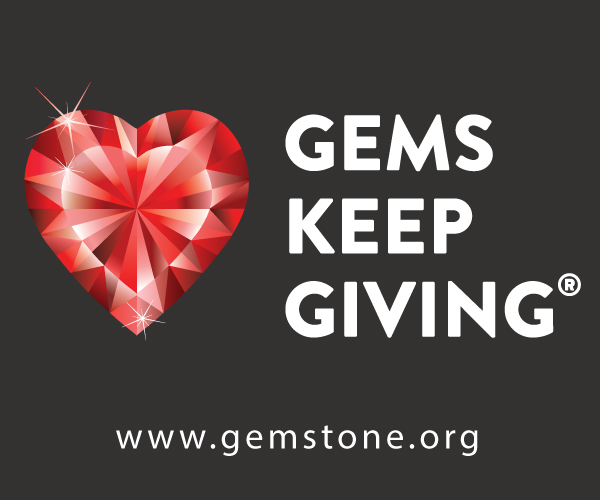Estimated reading time: 5 minutes
Since the pandemic, we have seen a seismic shift in the way our world does business. But it’s not the first time our industry has hit hard times, or experienced consequential changes. Within the current context of Covid, it’s an apt time to examine the driving forces that have created other massive industry shifts, not only in recent years, but over our lifetimes.
Finds – New Discoveries
One-if not the greatest-game changer our industry has ever experienced in the last hundred years has been the incredible number of extraordinary discoveries, both in terms of new deposits, and also new species of gemstones. For the large part and most recently, these have been unearthed in Africa, quite clearly the Cradle of Gemstones as much as of Mankind. The year 1967 was a spectacular time, with the discovery of the new species of both tanzanite and tsavorite in East Africa, while new finds of long-known varieties would add significant supply to already established gem markets. Emeralds, already known in Zambia since the 1920s, were in commercial production by the 1970s. Sapphires saw one of the greatest gem rushes of our generation in the 1990s in Madagascar. Rubies, first found in Tanzania in the 1900s, were discovered in Mozambique in 2008, which within five years would become the world’s largest ruby producer. Add tourmalines, spinels and garnets to the mix, and it’s clear that this shift in the supply chain has changed the front-end of our industry enormously.
Finds – New Technologies
It’s not only about what the earth has to offer, but also what we can make of it. Human interaction with gems, such as cutting and treating, has moved markets massively for millennia, while the synthesis of some stones has affected their natural counterparts noticeably. With the culturing of pearls and the commercial production of flame fusion ruby in the 1920s, both natural pearl and ruby markets saw a crash, which would of course rebound from strength to strength in the decades to follow. The introduction but weak disclosure of polymer-type clarity enhancements in emeralds had a similar effect in the 1990s, proving the importance of transparency (no pun intended) for the end consumer. More recently, the introduction of lead-glass filling for rubies supplied a specific tranche of the market without destabilizing the rest through better communication. Testing has removed some uncertainties, buoying individual markets. Since the 1950s, origin determination by microscopy created a brand for certain countries. Most recently, the age dating of sapphires with mass spectroscopy looks to be a game changer in origin determination, separating Madagascar from Kashmir, for example, should the inclusions be ready and willing.
Finance – Politics and Economics
If there’s one major global factor which will always automatically affect our market, it’s finance. With a price per carat benchmarking system, it’s intuitive that our products, although emotive and beautiful, have a relationship to commodities. When the American stock market crashed in 1929, pre-empted by a London crash merely weeks before, so too did gem prices across the board, together with many other asset classes. This generation, the collapse of Lehman Brothers in 2008 and the subprime mortgage crisis created the largest Dow Jones drop since September 11, 2001: another event with global financial and human implications. The result in 2008 was huge cross-sector knock-on effects, particularly in the luxury industry: by the following year even auction prices had hit the floor. Inversely, the auctions reported a swathe of world record gem prices in 2015/16, a recovery partly pushed up by the influence of China on gem purchasing: another more recent global economic and political shift.
Fashion – Marketing and Sales
Once a relatively innocuous concept in the bigger picture of global gem sales, today marketing has morphed into a major driving factor behind the growth of several sectors. Most famously, when De Beers publicized the tagline ‘A Diamond Is Forever’ in 1947, diamond engagement rings became the must-have for every young bride, creating a previously inexistent demand through a global ad campaign. Slow to catch up, colored stones have only seen a more holistic approach to industry-wide promotion in the 21st century, with the appearance of large-scale producers controlling more mining areas than before, and following in De Beers’ footsteps in attempting to promote-and control-the supply chain. With the concurrent trend of a natural consumer demand for color and individuality, this has set the spark of the single greatest overall rise in the colored gem market in just the last decade. And it feels like this is just the beginning.
Ecology – Climate Change and Pandemics
It is clear that the main market changes we have experienced throughout history are all part of a bigger picture of supply and demand, with major shifts caused by all the key economic factors, which could affect any industry, including new discoveries, technical developments, fashion trends, wider economics and indeed natural disasters. But not in living memory have we experienced the effects of the latter category on such an enormous scale. Typhoons shutting down Hong Kong shows, floods closing Sri Lankan mines, even tsunamis wrecking countries and continent. But never a single event so large as to take over the world. They say in evolutionary psychology that human behaviour is driven by the four ‘f’s – fighting, fleeing, feeding and reproduction. In the case of our industry, we have seen the most seismic shifts created by another 3 ‘F’s: Finds, Finance and Fashion. I leave it up to you to name a fourth for global pandemics.

















